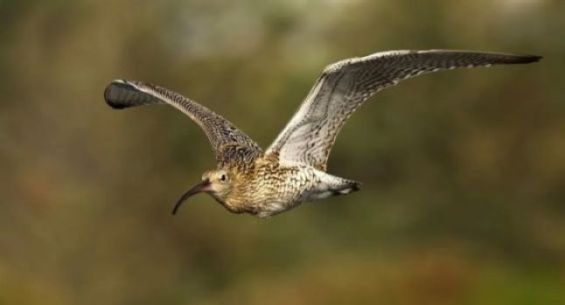You will no longer be able to see the elongated beak of this migratory bird that once lived across three continents. In a recent study published on November 18, 2024, scientists have announced the extinction of the Slender-billed Curlew. This event is considered the first known avian extinction in North Africa, Europe, and Western Asia to date.
The Curlew, a migratory shorebird, bred in western Siberia and spent winters around the Mediterranean Sea. The last confirmed sighting of this bird took place in northern Morocco in 1995. After that, the Curlew stopped returning to its main wintering site: Merja Zerga Lake in Moulay Bousselham near Kenitra.
Nicola Crockford, official at the Royal Society for the Protection of Birds, which brings together several wildlife conservation organizations fighting to protect birds and their natural habitats in particular, and global biodiversity in general, stated: «This is the first documented global extinction of a bird from continental Europe, North Africa, and Western Asia, and it happened in our time. How can we expect countries outside Europe to take responsibility for protecting their species when relatively wealthier countries have failed to do so?»
The Slender-billed Curlew will no longer come to Merja Zerga
According to the study's authors, the reasons for the Slender-billed Curlew's decline may never be fully understood. However, it is likely due to the intensive drainage of high wetlands where it bred for agricultural use, the loss of coastal wetlands used for winter feeding, and hunting, particularly in the final stages of this category's life, which was small in number, fragmented, and in continuous decline.

There may be other effects resulting from pollution, diseases, predation, and climate change, but the extent of these factors is unknown.
Dr. Alex Bond, the principal curator of birds at the Natural History Museum and a member of the team that tracked the fate of the extinct bird, explains their meticulous research. «When the Slender-billed Curlew stopped returning to its main wintering site at Merja Zerga in Morocco, significant efforts were made to try to identify its breeding sites. Several search missions were organized, covering hundreds of thousands of square kilometers. But unfortunately, all these efforts yielded nothing».
«With continuing climate change, things are not going to improve for birds. Fighting climate change, habitat destruction, and pollution is our best chance to protect them, both locally and globally».
Sounding the alarm
The announcement of this bird's extinction coincided with the announcement that 16 other migratory shorebird species have moved to higher threat categories on the IUCN Red List of Threatened Species due to their decline.

According to Alex Berry Mann, Red List Manager at BirdLife International and co-author of the study, «the devastating loss of the Slender-billed Curlew is a warning that no bird is safe from the threat of extinction. Since 1500, more than 150 bird species have disappeared worldwide. Invasive species have often been the main cause, causing 90% of bird extinctions on islands. But while the extinction rate on islands may be slowing, it continues to increase on continents. This is due to habitat destruction and degradation, overexploitation, and other threats».
«Urgent conservation actions are needed to save bird species; without them, we must prepare for a larger wave of extinction sweeping across the continents».
According to Nicola Crockford, international cooperation is paramount for species conservation. The expert explains that «conservation efforts by some countries can be undermined by harmful actions taken in other countries sharing the same migratory species. Just as carbon in the atmosphere is a measure of international efforts to combat climate change, the status of migratory species represents an indicator of the success of international efforts to conserve biodiversity».





 chargement...
chargement...













